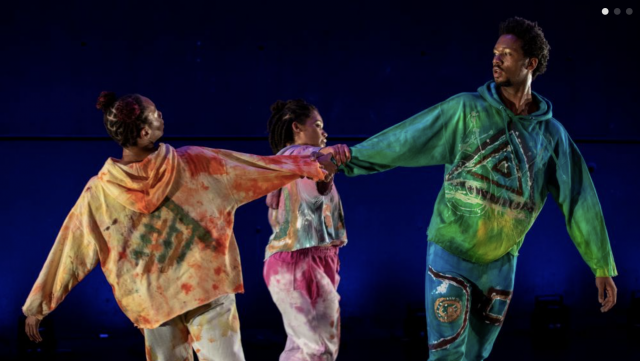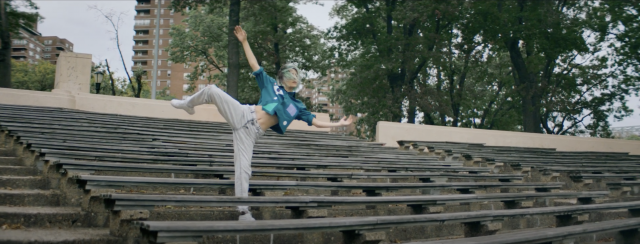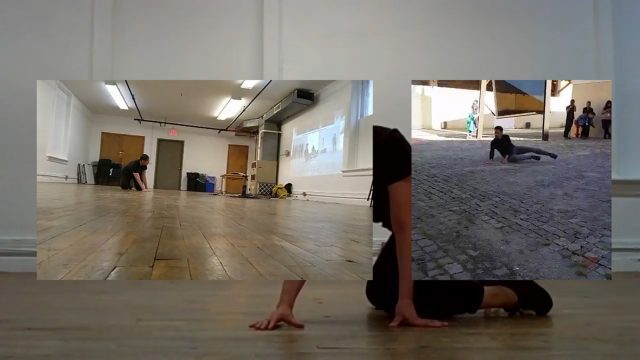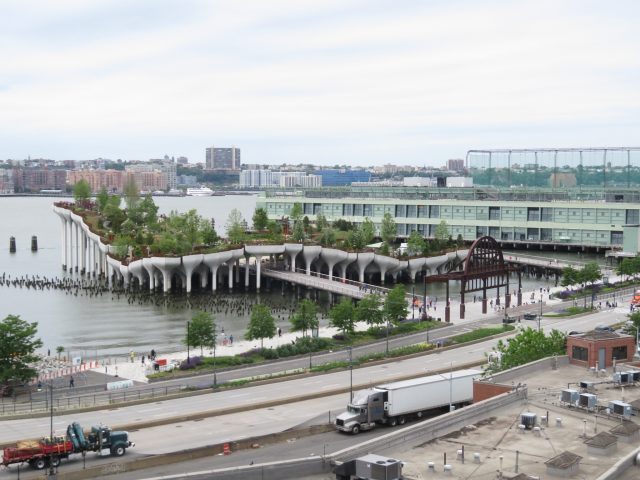
Little Island is an urban oasis that juts out on Pier 55 in Hudson River Park (photo by twi-ny/mdr)
LITTLE ISLAND
Pier 55, Hudson River Park at West Thirteenth St.
Open daily, 6:00 am – 1:00 am
Free timed tickets, noon – midnight
littleisland.org
little island slideshow
While billionaires Jeff Bezos, Richard Branson, and Elon Musk battle it out to see who can rocket to Mars first, New York socialite couple Barry Diller and Diane von Furstenberg have their feet firmly planted on the Earth. Ten years ago, the Diller-von Fürstenberg Family Foundation contributed $20 million to the construction of the High Line, a converted elevated railway that has become one of the most glorious parks in the world. And in 2015, they cemented their local legacy by donating $113 million to Little Island, a lovely new paradise built on the remnants of a ramshackle pier at West Thirteenth St., in the shadow of the Whitney and just down the street from David Hammons’s Day’s End, a 325-foot-long brushed-steel outline of an abandoned warehouse on Pier 52 where Gordon-Matta Clark carved holes in the walls in 1975, a ghostly homage to what — and who — is no longer there. (The Diller-von Fürstenberg Family Foundation was one of many donors who helped fund Hammons’s permanent installation.)
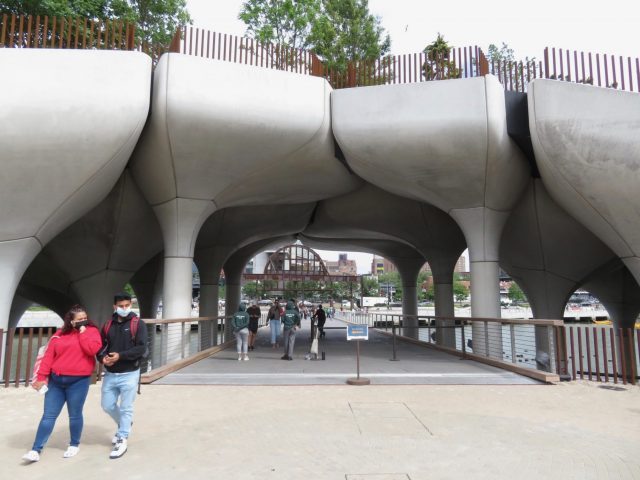
Concrete tulip pillars welcome visitors to Little Island (photo by twi-ny/mdr)
Little Island is a warm and welcoming oasis rising more than 60 feet above the Hudson River, shaped like a large leaf, leading visitors from the land into water. It is bursting with more than 350 species of flowers, trees, and shrubs, a 687-seat amphitheater for live performances known as the Amph, the Play Ground plaza where you can get food and drink (sandwiches, salads, fried stuff, vegan options), and stage and lawn space called the Glade. More than 66,000 bulbs and 114 trees have been planted, taking into account the changing seasons and even the differences in light between morning, afternoon, and night. It all sits upon 132 concrete pillars of varying heights that resemble high heels or slightly warped tulip glasses.
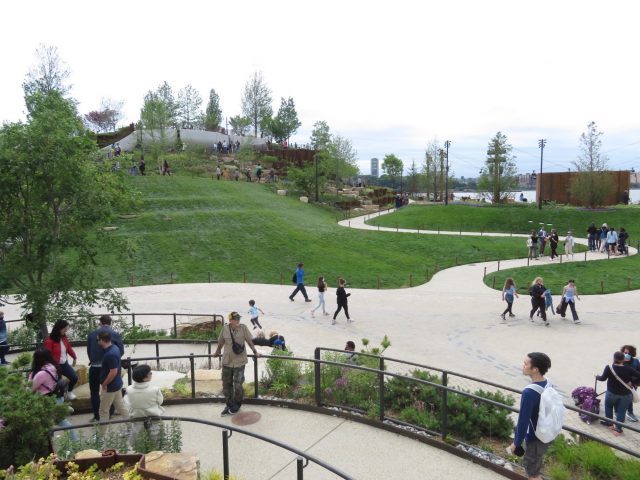
Winding paths lead to fun surprises on Little Island (photo by twi-ny/mdr)
There are several sloping paths that take you through the greenery and up to lifted corners that offer spectacular views of Lower Manhattan and Jersey City across the river. Little Island was designed by Thomas Heatherwick of London-based Heatherwick Studio, with landscape design by Signe Nielsen of the New York City firm MNLA, offering unique surprises and sweet touches as you make your way across the stunning environment, including rusted cylindrical metal posts that evoke the pier’s eroding wooden piles, a small wooden stage, interactive dance chimes and an instrument sculpture (“Instrument for All”) by Alfons van Leggelo, and a pair of black-and-white optical spinners.
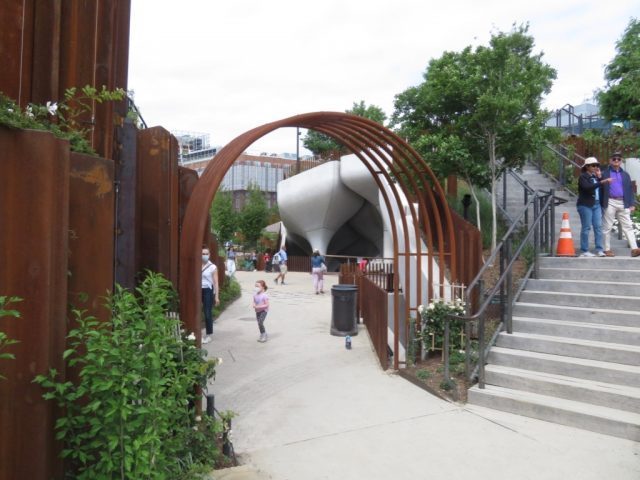
Little Island has unique architectural elements around every corner (photo by twi-ny/mdr)
In the middle of the Play Ground, an abstract-shaped floor plaque pronounces, “In this year of 2021 we dedicate Little Island to the people of New York and to visitors from around the world — for their everlasting enjoyment, for gamboling and cavorting, playing and ramping, repose and reflection — and with the hope that it fulfills that ambition with as much joy as it has brought to those that built it.”
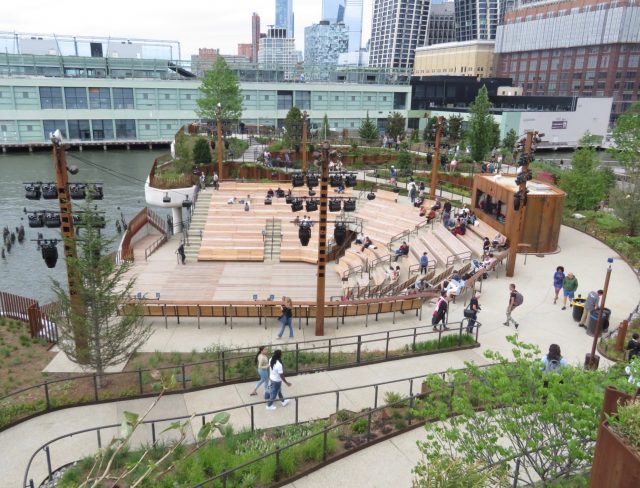
The Amph will host free and ticketed live performances all summer long and into the fall (photo by twi-ny/mdr)
That joy continues with free year-round multidisciplinary programming that kicks off this month with such series as “Free Music in the Amph,” “Sunset Sounds,” “Little Library,” “Live! at Lunch,” “Late Night in the Play Ground,” “Weekend Wind Down,” “Savory Talks,” “New Victory LabWorks,” and “Creative Break: Music,” “Creative Break: Visual Art,” and “Creative Break: Dance.” Admission is first-come, first-served; however, entry to Little Island, which is open daily from 6:00 am to 1:00 am, requires advance reservations between noon and midnight. There will also be paid ticketed performances such as “Broadway Our Way” and “An Evening with American Ballet Theatre,” both of which sold out quickly, and free shows that must be reserved in advance, such as “Tina and Friends: BYOB (Bring Your Own Beautiful),” a Pride Month celebration on June 26 at 8:00 with award-winning playwright and director Tina Landau. Landau, tap dancer and choreographer Ayodele Casel, actor, singer, and music director Michael McElroy, and PigPen Theatre Co. are Little Island’s inaugural artists-in-residence; they will be curating and participating in numerous events in the next several months. Below is a list of upcoming ticketed shows.
Saturday, June 26, 8:00
Tina and Friends: BYOB (Bring Your Own Beautiful), with Tina Landau, the Amph, free tickets available June 16 at 2:00
Saturday, July 10, 2:00
Little Orchestra Society’s Things That Go Bang, the Amph, $25-$65
Saturday, July 24, and Sunday, July 25
Little Island Storytelling Festival, with Mahogany L Browne, Sarah Kay, Jon Sands, Shaina Taub, Broken Box Mine, Daniel Nayeri, Phil Kaye and the Westerlies, Michael Thurber, and others, the Amph, some shows require advance tickets available June 22
Friday, September 17, Saturday, September 18, and Sunday, September 19, 8:00
Little Island Dance Festival, with Ronald K. Brown/Evidence, Barkha Patel, Michela Marino Lerman, Tomoe Carr, Danni Gee, Andre Imanishi, and others, the Amph, tickets on sale June 22
